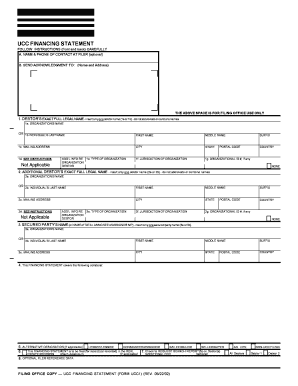
Back in 2013, recent amendments to Article 9 took effect. One of the amendments provides that a driver’s license is the best source for determining the legal name of an individual when filing a financing statement.
The question of two different names on a driver’s license arose in the recent case In re Pierce, 2018 Bankr. LEXIS 287 (Bankr. S.D. Ga. Feb. 1, 2018). Farm Bureau Bank (the “FBB”) made a secured loan to Kenneth Pierce (“Debtor”) on June 18, 2015 to finance the purchase of a fertilizer spreader for his farm. To secure their interest, on June 23, 2015, FBB filed a UCC-1 financing statement which listed his name as “Kenneth Pierce.”
The debtor’s unexpired Georgia driver’s license, included both the printed name of the licensee & the licensee’s signature. The printed name on the license included the full middle name. However, the signature was simply “Kenneth Pierce.”
In April of 2017, the Debtor filed for bankruptcy. The following month FBB filed a proof of claim for the outstanding balance of $14,459.81 of the loan. The Debtor, in turn, filed an objection to the claim. The Debtor argued that FBB’s financing statement failed to sufficiently provide the name of the debtor making the UCC-1 seriously misleading, &, as a result, FBB’s security interest was unperfected & its claim unsecured.
Certain requirements must be met under the UCC in order to perfect a security interest on collateral. It is undisputed that in this case FBB’s security interest attached to the fertilizer spreader for UCC purposes. The issue here, however, was whether FBB’s security interest was perfected.
One of the requirements for properly filing is providing the debtor’s name. The 2010 amendments of Article 9, specifically debtor name rules, needed to be reviewed by the Court. The amendments gave two options to filing offices for debtor name standards: “Alternative A or Alternative B”. Alternative A, which is the standard Georgia opted for, provides that for an individual, the financing statement is sufficient only if it provides the debtor name of the individual which is indicated on the driver’s license. Alternative B provides a safe harbor provision that could allow multiple variations of an individual’s name to be sufficient for purposes of the financing statement.

The debtor argued that since the name on the UCC-1 did not match the name printed on the license, it did not meet the UCC individual debtor name sufficiency requirements. It was argued that due to there being two names on the license, both the printed name as well as the signed name, either should meet the requirements.
The court analyzed whether the phrase “indicated on the driver’s license” in the Amendments referred to the printed name only or if it would also include the signed name as well.
The court reasoned that by electing to adopt “Alternative A Only if” rule, the Georgia legislature had intended for more certainty in regards to debtor names. Allowing two ways of identifying the debtor, would thwart the legislature’s intent. It was decided that if both the printed name & signed name were allowed to fulfill the individual debtor name requirement, it would not meet the legislature’s intent. It also noted that signatures were often illegible. Using the name printed on the driver’s license “ensures simplicity & predictability.”
The court also analyzed the case of Genoa Nat’l Bank v. Southwest Implement, Inc. (In re Borden) (353 B.R. 886 (Bankr. D. Neb. 2006)) for guidance. In this case, the debtor was identified by his legal name “Michael Ray Borden” or by “Michael R. Borden” on his driver’s license & on other legal documents, however he often signed legal documents by his nickname, “Mike Borden.” The court held that financing statements identifying the debtor as “Mike Borden” were “seriously misleading.” This case suggested to the court that the name typed on legal documents is more important than the signed name. Further, the court found support for this in the instructions on the actual UCC-1 form. The form states to use the debtor’s “exact, full name” without omission, modification, or abbreviation.
The court determined that the typed name on a license or legal document trumps the signature. It was ruled that the Debtor’s objection to the Bank’s proof of claim were sustained since the Bank failed to carry its burden.
The lesson learned here is that if the Debtor is an individual, then the printed name on the driver’s license, not the signature, is the correct name to use for purposes of filing a financing statement. The court noted that if FBB had followed the form instructions, it would have provided the debtor’s full name. If there is any doubt about the debtor’s name, for example if there is a discrepancy between the printed name & the signed name on the Debtor’s driver’s license, the secured party should file its UCC-1 financing statement using all name variations.
Contact Us today for the best in nationwide filing expertise & services to make you the hero to your company.
NOT INTENDED TO PROVIDE LEGAL, ACCOUNTING OR OTHER PROFESSIONAL ADVICE AND SHOULD NOT BE RELIED UPON AS SUCH.
